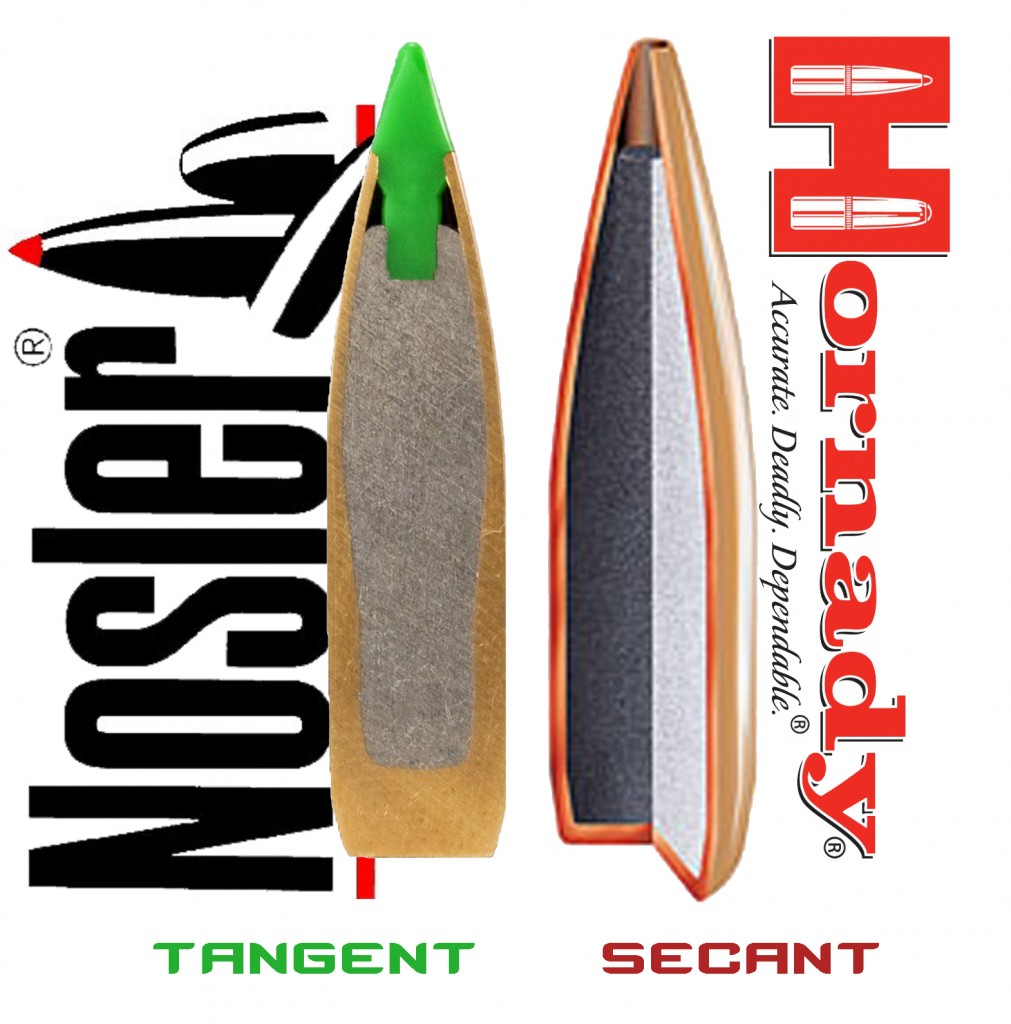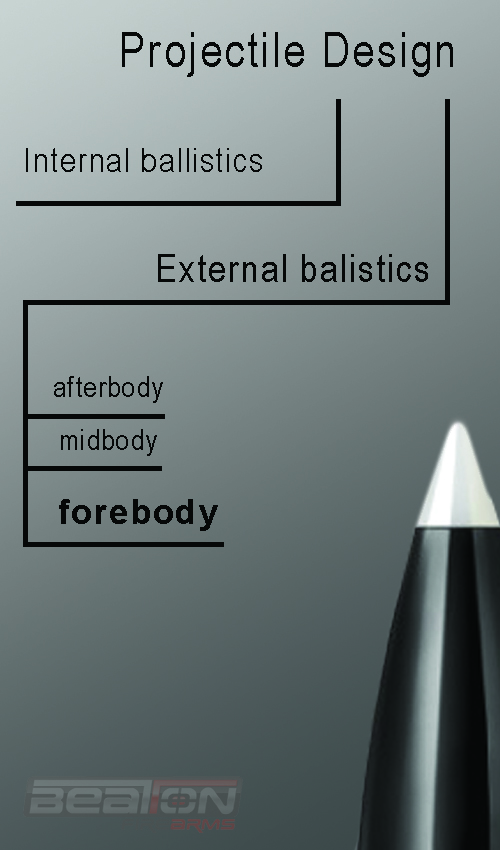With competition shooters, the rules of the match often dictate what cartridge the shooter must use, but there are exceptions. Regardless, many guns will be very similar to each other in similar in design, construction and performance. A group of hunters may have similar rifles in similar calibres in order to shoot the same game under similar conditions. But what almost always differs in the components shooters use is their choice of projectile.
In choosing a projectile, there are two main areas of ballistics which need to be considered, which are
- External ballistics – How the projectile behaves during free flight, from when it exits the barrel until it strikes the target. Important for both target shooters and hunters.
- Terminal ballistics – What happens when a projectile strikes the target – specifically, how the projectile behaves when it enters the body of an animal.
External ballistics, as far as projectile selection is concerned, is largely optimised by choosing a projectile with the most efficient external design (which is expressed by a figure called Ballistic Coefficient or BC). Projectile selection for optimal Terminal performance is influenced by the way the projectile deforms when it enters the body of an animal, which is a function of its internal design.
| External performance is important to target shooters and hunters. Terminal performance is, generally, only important to hunters. |
Optimal External Ballistics happens when you drive the highest BC projectile for a certain calibre as fast as you can – but at what cost and is it worth the price?
|
Projectiles designs can be broken down into three main areas – the forebody, midbody and afterbody. While there are small variations in the design of the afterbody (specifically, boat tail design) it is the design of the ogive in the forebody that characterises projectile designs and distinguishes projectile manufacturers.
There are three main designs of projectile ogive – Tangent, Secant and Hybrid. Tangent Ogive projectiles have an ogive curve that meets the midbody at 0 degrees, that is, there is no distinct point where they meet (called the conical transition). Examples of projectiles like this are Sierra Matchking, all the Nosler projectiles and Lapua Scenar. Secant ogive projectiles do not meet the midbody at 0 degrees, and have a defined conical transition, where the midbody ends and the forebody begins. Examples of projectiles with secant ogives are Hornady A-Max and V-Max, Swift Sirocco and Berger VLD. The Hybrid is exactly what it sounds like – a hybrid of the two.
When the projectile ogive starts parallel to the projectile itself, such as with a tangent ogive projectile, the forebody must curve toward the tip of the projectile fast to avoid creating a projectile that is too long to fit into the magazine. While projectiles where the ogive starts at an initial angle to the midbody, such as with secant ogive projectiles, projectile manufacturers can make the ogive taper slower and not make a projectile too long. Because of this projectile design geometry, tangent ogive projectiles always appear to have ‘blunter’ noses than their Secant counterparts. This blunt nose means that Tangent ogive projectiles are not as efficient through the air as Secant ogive projectiles – reflected by their lower Ballistic coefficients. This is the main benefit to the Secant design.
Loaded cartridges do not sit in the centre of the chamber when they are discharged – gravity means that the loaded cartridge lays in the bottom of the chamber. Because of this, the projectiles are rarely perfectly aligned with the centre of the bore. A Tangent ogive projectile handles this mis-alignment well – the rounded nose will funnel the projectile into the centre of the bore before engaging in the rifling, ensuring the projectile is not canted as it travels down and ultimately exits the barrel.
Due to the sharp shoulder at the conical transition, a Secant ogive projectile does not handle misalignment as well. Secant ogive projectiles can engage in the rifling canted and continue that way down the barrel until the projectile exits. The projectile will correct this cant in flight, though it would have already lost considerable accuracy. Trial and error with reloading ammunition can often produce a cartridge with reasonable accuracy if the shooter has sufficient patience.
So the difficulties of loading of the Secant ogive projectile means that short range accuracy is traded for long range ballistic efficiency. Whereas the Tangent ogive projectile trades long range ballistic efficiency for short range consistency and ease of loading
So projectile choice is really circumstantial. If you are shooting targets at long range a puff of wind can upset the bullet path, the Secant ogive projectile with an increased ballistic coefficient is probably going to be beneficial. If you’re shooting game under a spotlight you are unlikely to benefit from the infinitesimal flattening of the trajectory and minimal reduction in wind drift (if wind is present) that a secant ogive projectile offers – a Tangent ogive projectile may be preferred for the better accuracy you are likely to achieve.
I haven’t mentioned much about Hybrids during this blog because they basically take the best of each of the other two ogive designs. Their only downside is their length – it is difficult to load ammunition with a Hybrid projectile that will fit into a standard magazine. They are also in short supply in Australia and expensive.
If I were to give my personal opinion based on the type of shooting that I do, I like to use Nosler Custom Competition projectiles. More than 90% of the shooting I do is hunting small to medium game at night under a spotlight. I use overbore cartridges that propel projectiles exceedingly fast and flat. The distances that I shoot at never exceed 400 meters, especially if it is windy, so I have no need of a high BC, flat shooting, wind bucking projectile. However, the main reason I choose the Nosler Custom Competition projectile is because of the Terminal performance that it offers, which I will cover in the next blog in this series.
- Zaine Beaton
If you wish to comment or provide feedback on Zaine’s blog you can contact him via the email address – zaine@beatonfirearm.onpressidium.com
This email address is for contacting Zaine in direct relation to blog articles only – not for general correspondence or sales inquiries. For sale inquiries, please visit our Contact Us page, which can be found at the top of the page. Contact Us
Please keep in mind that these are Zaine’s personal comments – they are not a reflection of the opinions of any other staff or directors of Beaton Firearms.




